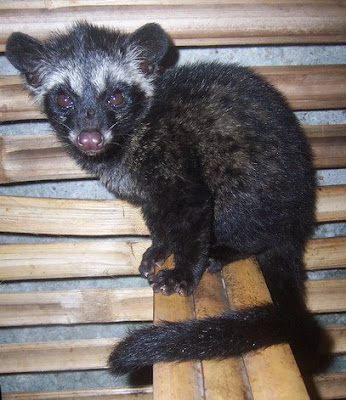 Up to $600 a pound for cat crap coffee??
Up to $600 a pound for cat crap coffee??When it comes to international foods it seems to me one of two extremes is about the only thing ever covered in the media, the most unusual or the most expensive. Sometimes they can be one and the same, like truffles or “Kopi Luwak,” the world’s most expensive coffee that gets its unique characteristics only after the undigested beans pass through the system of the cat-sized Asian Palm Civet. Uh…all the way through for which the “privileged” patron pays up to $100 per cup. Espresso sized, too, I wager.
I don’t drink coffee and certainly nobody should ever feel that obligated when it comes to trying local foods while traveling. The other end of the extreme, however, is nearly as heinous as the price of Kopi Luwak and that is not being willing to try anything.
It had been nearly 20 years between my first visit to Paris at age 9 and my next visit as an adult on my own. On that first trip my family was part of a tour that kept everything anti-septic down to the restaurants chosen specifically for foods we the tourists would eat. Traveling by myself and having made it down to the Champs Elysees on my own I was hungry. To my rescue off to the side was a Burger King and I hot-footed it in to the familiar, comfortable clutches of home cooked fast food.
Then and there, with a belly full of grease, I made a pact with myself. If ever I am in a country for the first time and fresh off the “inflight breakfast” served before landing, one and only one comfort meal is allowed just to get me going. If I do not have the means to prepare my own meals in the same manner as the locals then I am free to try a new restaurant every night but absolutely no fast food of any nationality or American branded chains in general.
Let me say now that I don’t eat calves brains, chitlins or beef tongue served up right here in the United States so ix-nay on kidney pie, tartare, honey-cone tripe or menudo overseas, either.
Some of the foods non-adventurous tourists do turn their noses up, however, have literally been in the family for years, sustaining the people of the host nation almost since time began. Japan is the largest consumer of seafood in the world with a large percentage of it eaten raw. I ask myself, if 120 million people enjoy sushi on a daily basis then either they're collectively immune to mercury - unlikely - or it must not be all bad.
I try to go beyond just experimenting with foreign foods by learning how to cook them once I get home. I’ve learned to make staples like feijoada (Brazilian stew), paella (Spanish casserole), aloo gobi (Indian potatoes), Thai Satay and New Zealand lamb well enough to be almost boring.
Beef is not always beef but my general rule of thumb when I leave the country is quite simple – if the only thing different about it is the sauce over the top, I’ll try it. Upset stomach or Montezuma's? At least I'll have a great story for parties!
Gotta go!
No comments:
Post a Comment